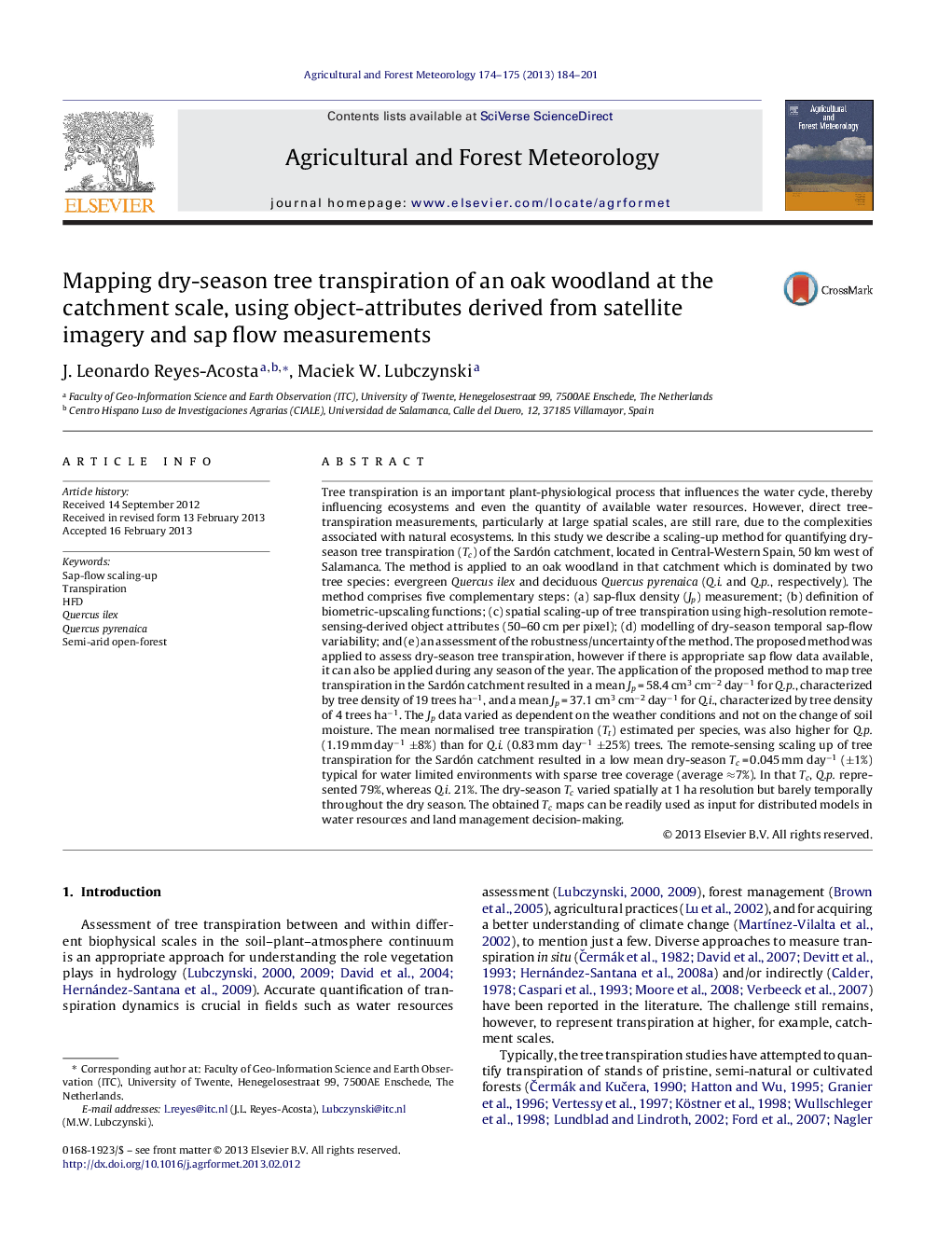| کد مقاله | کد نشریه | سال انتشار | مقاله انگلیسی | نسخه تمام متن |
|---|---|---|---|---|
| 81786 | 158350 | 2013 | 18 صفحه PDF | دانلود رایگان |

Tree transpiration is an important plant-physiological process that influences the water cycle, thereby influencing ecosystems and even the quantity of available water resources. However, direct tree-transpiration measurements, particularly at large spatial scales, are still rare, due to the complexities associated with natural ecosystems. In this study we describe a scaling-up method for quantifying dry-season tree transpiration (Tc) of the Sardón catchment, located in Central-Western Spain, 50 km west of Salamanca. The method is applied to an oak woodland in that catchment which is dominated by two tree species: evergreen Quercus ilex and deciduous Quercus pyrenaica (Q.i. and Q.p., respectively). The method comprises five complementary steps: (a) sap-flux density (Jp) measurement; (b) definition of biometric-upscaling functions; (c) spatial scaling-up of tree transpiration using high-resolution remote-sensing-derived object attributes (50–60 cm per pixel); (d) modelling of dry-season temporal sap-flow variability; and (e) an assessment of the robustness/uncertainty of the method. The proposed method was applied to assess dry-season tree transpiration, however if there is appropriate sap flow data available, it can also be applied during any season of the year. The application of the proposed method to map tree transpiration in the Sardón catchment resulted in a mean Jp = 58.4 cm3 cm−2 day−1 for Q.p., characterized by tree density of 19 trees ha−1, and a mean Jp = 37.1 cm3 cm−2 day−1 for Q.i., characterized by tree density of 4 trees ha−1. The Jp data varied as dependent on the weather conditions and not on the change of soil moisture. The mean normalised tree transpiration (Tt) estimated per species, was also higher for Q.p. (1.19 mm day−1 ±8%) than for Q.i. (0.83 mm day−1 ±25%) trees. The remote-sensing scaling up of tree transpiration for the Sardón catchment resulted in a low mean dry-season Tc = 0.045 mm day−1 (±1%) typical for water limited environments with sparse tree coverage (average ≈7%). In that Tc, Q.p. represented 79%, whereas Q.i. 21%. The dry-season Tc varied spatially at 1 ha resolution but barely temporally throughout the dry season. The obtained Tc maps can be readily used as input for distributed models in water resources and land management decision-making.
► We mapped tree transpiration in an oak woodland using vegetation object-attributes.
► This transpiration was upscaled from sap flow measurements to the catchment scale.
► Tree transpiration is low and barely varies temporally during the dry season.
► Tree transpiration in the catchment varies spatially with tree density and streams.
► One of the species contributed more to tree transpiration than the other.
Journal: Agricultural and Forest Meteorology - Volumes 174–175, 15 June 2013, Pages 184–201